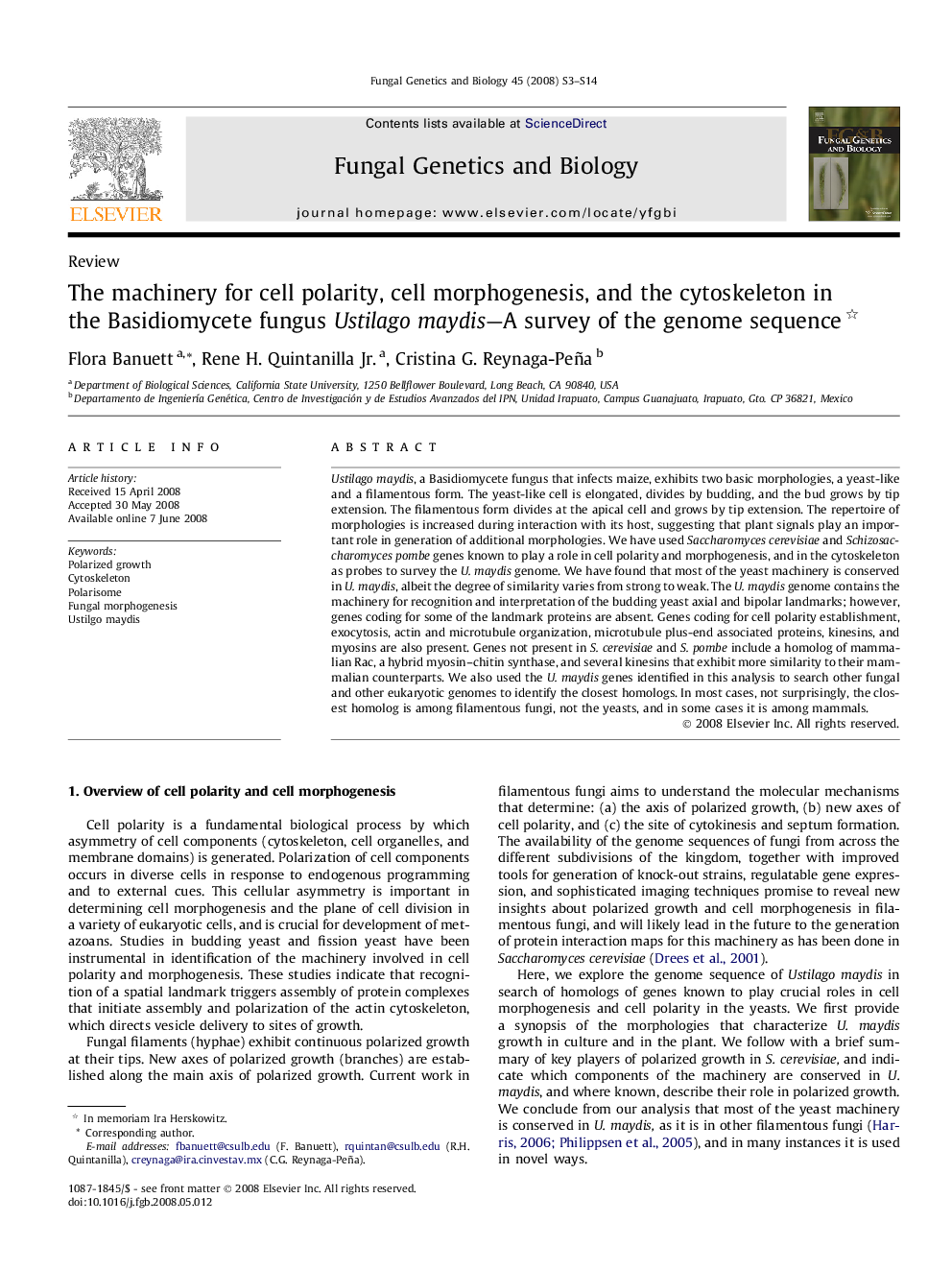| کد مقاله | کد نشریه | سال انتشار | مقاله انگلیسی | نسخه تمام متن |
|---|---|---|---|---|
| 2181612 | 1095309 | 2008 | 12 صفحه PDF | دانلود رایگان |

Ustilago maydis, a Basidiomycete fungus that infects maize, exhibits two basic morphologies, a yeast-like and a filamentous form. The yeast-like cell is elongated, divides by budding, and the bud grows by tip extension. The filamentous form divides at the apical cell and grows by tip extension. The repertoire of morphologies is increased during interaction with its host, suggesting that plant signals play an important role in generation of additional morphologies. We have used Saccharomyces cerevisiae and Schizosaccharomyces pombe genes known to play a role in cell polarity and morphogenesis, and in the cytoskeleton as probes to survey the U. maydis genome. We have found that most of the yeast machinery is conserved in U. maydis, albeit the degree of similarity varies from strong to weak. The U. maydis genome contains the machinery for recognition and interpretation of the budding yeast axial and bipolar landmarks; however, genes coding for some of the landmark proteins are absent. Genes coding for cell polarity establishment, exocytosis, actin and microtubule organization, microtubule plus-end associated proteins, kinesins, and myosins are also present. Genes not present in S. cerevisiae and S. pombe include a homolog of mammalian Rac, a hybrid myosin–chitin synthase, and several kinesins that exhibit more similarity to their mammalian counterparts. We also used the U. maydis genes identified in this analysis to search other fungal and other eukaryotic genomes to identify the closest homologs. In most cases, not surprisingly, the closest homolog is among filamentous fungi, not the yeasts, and in some cases it is among mammals.
Journal: Fungal Genetics and Biology - Volume 45, Supplement 1, August 2008, Pages S3–S14